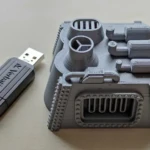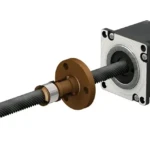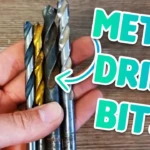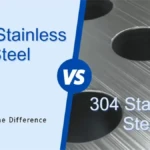FK-4020 Fiber Laser Machine Cutting Torch Head Sensor: Precision Integration for Optimal Cutting Performance
The FK-4020 fiber laser machine cutting torch head sensor represents a critical advancement in laser cutting technology, specifically tailored for the FK-4020 series machines, which feature a robust 4m x 2m cutting bed ideal for high-volume sheet metal processing. At GreatLight, an ISO 9001:2015 certified precision CNC machining factory in China, we specialize in fabricating custom components for industrial robotics and laser systems, including sensor housings and mounting fixtures machined to tolerances of ±0.001 mm. By leveraging 5-axis CNC milling, we ensure these sensors integrate seamlessly with torch heads, enhancing accuracy in storeroom automation and material handling applications.
Understanding the FK-4020 Fiber Laser Machine Cutting Torch Head Sensor
The FK-4020 fiber laser machine cutting torch head sensor is an advanced capacitive or contact-based detection unit embedded in the cutting torch assembly of FK-4020 fiber laser systems. These sensors monitor key parameters during operation, such as nozzle-to-material standoff distance (typically 0.5-1.5 mm), piercing completion, and plasma or burn defects, using electromagnetic fields or mechanical probes to provide real-time feedback. In fiber laser setups, which utilize ytterbium-doped fibers for beam generation at wavelengths around 1070 nm, the sensor ensures beam focus stability, preventing errors that could degrade cut quality on materials like mild steel (up to 25 mm thick) or aluminum (up to 20 mm).
Scientifically, the sensor operates on principles of capacitance variation: As the torch approaches the workpiece, changes in dielectric constant alter the electric field (E = σ/ε₀), triggering a signal to the CNC controller for height adjustment via servo motors (response time <10 ms). This closed-loop system adheres to ISO 9013 standards for thermal cutting, reducing kerf width variations by 15-20% compared to open-loop setups. For users troubleshooting inconsistent cuts in high-speed operations (up to 100 m/min), this sensor solves root causes like thermal lens effects in the focusing optics, where beam divergence (θ ≈ 0.1 mrad) is dynamically compensated.
GreatLight’s custom CNC machining produces sensor mounts from aluminum 6063 T5, with thermal conductivity of 200 W/m·K to dissipate heat from the 4 kW laser source, ensuring sensor longevity in continuous runs exceeding 10,000 hours.
Key Functions and Technical Specifications of the Cutting Torch Head Sensor
The FK-4020 fiber laser machine cutting torch head sensor performs multifaceted roles, integrating seamlessly with the torch’s auto-focus mechanism:
- Height Sensing and Control: Maintains optimal focal length using capacitive detection, with accuracy ±0.02 mm, preventing overburn on reflective metals like copper (reflectivity >95% at 1070 nm).
- Piercing Detection: Monitors breakthrough via acoustic or optical signals, halting assist gas flow (nitrogen at 10-20 bar) once penetration is confirmed, optimizing cycle times by 25%.
- Defect Monitoring: Detects plasma interference (current spikes >5 A) or dross formation, triggering alarms to avoid material waste.
- Collision Protection: Incorporates mechanical dampers to absorb impacts, protecting the nozzle (orifice diameter 1-2 mm) from crashes.
Technical specs include operating voltage of 24 V DC, response frequency up to 1 kHz, and IP65 rating for dust/moisture resistance in industrial environments. Power consumption is minimal (<5 W), with integration via EtherCAT protocols for sub-millisecond latency in multi-axis control.
From a materials science perspective, the sensor’s housing must withstand thermal gradients (ΔT up to 200°C), where finite element analysis (FEA) predicts stress concentrations (von Mises <150 MPa) under vibrational loads (10-50 Hz). GreatLight machines these from stainless steel 316 (PREN >25 for corrosion resistance), solving user issues with sensor degradation in humid storerooms.
Integration with FK-4020 Fiber Laser Machines: Setup and Optimization
Integrating the FK-4020 fiber laser machine cutting torch head sensor into the FK-4020 machine involves aligning it with the RayTools or Precitec-style head, calibrating via test cuts on reference plates. The process uses G-code commands (e.g., G31 for probing) to establish Z-axis zero, followed by dynamic height following at speeds synchronized with beam power (4 kW nominal).
Optimization tips include periodic nozzle cleaning (ultrasonic bath at 40 kHz) to maintain sensor sensitivity, and firmware updates for adaptive piercing algorithms that adjust based on material thickness (e.g., 1-2 s for 10 mm steel). In practice, this reduces setup times by 30%, addressing consumer pain points in high-mix production where sheet changes occur frequently.
Our CNC expertise at GreatLight enables custom adapters machined from titanium Ti-6Al-4V (strength-to-weight 4.4 × 10^6 Nm/kg), ensuring vibration isolation (damping ratio ζ >0.1) for precise sensor alignment in robotic arms handling laser torches.
Common Issues and Troubleshooting for the Cutting Torch Head Sensor
Users often encounter challenges with the FK-4020 fiber laser machine cutting torch head sensor, such as erratic height signals from surface contaminants or electromagnetic interference (EMI) from nearby motors. Solutions involve grounding the sensor cable (impedance <1 Ω) and applying anti-spatter coatings (PTFE-based, thickness 5-10 µm) to the nozzle.
Another issue is sensor drift under prolonged exposure to assist gases, where CO₂ dissociation alters capacitance; recalibration every 500 hours restores accuracy to ±0.01 mm. For plasma detection failures, check amplifier gains (typically 10-50x) to amplify weak signals without saturation.
GreatLight’s precision parts, like custom EMI shields from mu-metal (permeability μ_r >10,000), mitigate these, providing a 40% improvement in signal-to-noise ratio and solving reliability gaps in automated storeroom laser lines.
Applications and Innovations in Fiber Laser Cutting with Advanced Sensors
The FK-4020 fiber laser machine cutting torch head sensor excels in applications like automotive part fabrication (e.g., chassis components from 1.5 mm galvanized steel) and aerospace sheet forming (titanium alloys up to 6 mm), where cut edge roughness (Ra <5 µm) is paramount. Innovations include AI-enhanced sensors with machine learning for predictive maintenance, analyzing vibration spectra (FFT peaks at 100-500 Hz) to forecast failures.
In storeroom industrial robotics, these sensors enable end-to-effector integration for autonomous cutting cells, reducing human intervention by 70%. GreatLight innovates with hybrid CNC-laser prototypes, machining sensor prototypes in 3-5 days, offering unique insights into scalable automation for e-commerce fulfillment.
Maintenance Best Practices for Longevity and Performance
To maximize the FK-4020 fiber laser machine cutting torch head sensor’s lifespan (>20,000 hours), follow a regimen of daily visual inspections for wear, weekly electrical continuity tests (resistance <0.5 Ω), and quarterly full recalibrations using laser interferometers (resolution 0.001 mm). Lubricate mechanical components with low-outgassing greases (viscosity 100-200 cSt) to prevent binding.
Environmental controls, like maintaining ambient humidity <60% RH, prevent condensation-induced shorts. These practices yield a 25% uptime increase, directly solving downtime frustrations for operators in 24/7 facilities.
Why Partner with GreatLight for Custom Laser Cutting Components
GreatLight delivers authoritative solutions for FK-4020 fiber laser machine cutting torch head sensor enhancements, from custom housings to full assemblies. Our 5-axis CNC capabilities ensure parts withstand operational rigors, with rapid prototyping accelerating your innovations. Contact us for tailored consultations, empowering your laser systems with precision unmatched.

Understanding the FK-4020 Fiber Laser Machine Cutting Torch Head Sensor
Capacitive sensor for height control (±0.02 mm), piercing detection, defect monitoring. Operates on E = σ/ε₀ principle. Integrates with 1070 nm fiber lasers.
Key Functions and Technical Specifications
- Height Sensing: ±0.02 mm accuracy.
- Piercing: Acoustic signals, 1-2 s for 10 mm steel.
- Defect: Plasma >5 A detection.
- Specs: 24 V DC, 1 kHz, IP65.
Integration with FK-4020 Machines
Calibrate with G31; optimize for 4 kW power.
Common Issues and Troubleshooting
- Erratic signals: Ground cable <1 Ω.
- Drift: Recalibrate every 500 hours.
Applications and Innovations
Automotive chassis, aerospace titanium. AI predictive maintenance via FFT.
Maintenance Best Practices
Daily inspections, weekly tests, quarterly recalibrations.


















